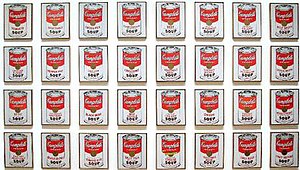" A pile of bicycle tires is not a system. If you remove one tire from the pile, you still have a pile of tires and nothing more. However, if you put that tire on a bicycle, the tire becomes part of the system and all of the parts of the bicycle, including the tire, work together to make the system function. If the tire gets a flat, the system cannot function until the flat is repaired."
I still remember the pile of tyres used by a farmer to weigh down a silage tip.
Every week, I would run along the path enjoying the view and speed up as I came to the ugly pile of tyres.
Funny how these tyres should pop up here.
Is the memory of this pile of tyres (long since removed) a system or part of a system?
Is the pile of tyres itself a system or part of a system?
On one level, the pile has become part of CLMOOC's system.
It will perhaps become part of a system of reflective learning.
I am beginning to think that the pile of tires is a system of itself.
I quickly jump to another pile.
2. A pile of photos
I have piles of photos in Google.
What system are they part of?
I think the answer must be that they are part of multiple systems.
3. A pile of empty tin cans.
On the face of it there is little interest to be had in this photo.
If one looks carefully one can see that the tin cans are not abandoned; they are an exhibit behind glass.
Reflected in the glass are the shadows of people who are gazing intently at the pile of tin cans.
One of the people thus reflected is myself.
This pile of tin cans is a system.
It is part of a terrifying system.
It is part of a terrifying spectacle...
4. A pile of spectacles
Looking at this through its glass darkly one becomes aware of the enormity of a system.
Seeing maybe believing; it is surely not understanding.
One cannot disconnect the tin cans from the spectacles, or for that matter from the other exhibits.
5. A pile of pots.
These cooking pots seen individually have little apparent intrinsic value other than as part of a holocaust exhibit.
6. A pile of photocopies
Pile upon pile of photocopied paper, left on shelves.
There are cupboards which I dare not open for fear of being submerged by reams of ancient photocopies.
Hour upon hours of mechanical reproduction.
Hour upon hours of comprehension exercises.
Hour upon hours of educational waste.
I remember people long-since retired who are still present through their stacks of photocopies.
An empty space, a warehouse, a noman's land.
When we first ventured out of the over-constraining classrooms, we started to see disused space with new eyes.
7. A stack of tables
The stacks of tables and chairs indicated that nobody had really thought much about this space which wasn't really a corridor and wasn't really a classroom.
"What shall we do with these old chairs and tables?"
'"Let's leave them here."
Four years on, and the space where we found the stacks of tables and chairs has been repurposed as an open learning space.
Now, I come to think about it, this post is full of repurposing of objects, repurposing of spaces, or reimagining systems...
8. A stack of soup cans
9. A pile of blog posts
10. A pile Facebook posts
11. A pile of Google + posts
12. A pile of bricks
A pile of bricks is just a pile of bricks?
I suggest that you try removing one of the bricks from the Carl André sculpture in the Tate Gallery in London to test the veracity of this statement.
13. A pile of electronic waste.
A pile of stuff is never just a pile of stuff...







"A pile of stuff is never just a pile of stuff"! Your words echo through my digital piles and ring off the bits and bytes of electronic words and images. You construct your pile so artistically! In digital teaching and learning spaces the piles require sifting and sorting - just as the artist sifted through rusty cans and sorted them into an artist pile for viewing, so to do teachers and students sift and sort through piles of digital flotsam to discover a nugget to connect to a thought or idea. The 'hours and hours of mechanical reproduction' have turned into hours and hours of digital dumpster diving! So many piles and so little time for learning!
ReplyDeleteThanks Helen.
DeleteAre we able to learn to avoid painful piles?
Maybe, Maybe not. Perhaps it's part of the human condition.
DeletePiles of stuff are always part of a system.
ReplyDeleteSystem thinking helps us solve problems.
Piles of stuff can be used to solve problems.
Piles will no longer be piles once a use is found.
Unless the piles are set on display.
Behind glass. Utilitarian become precious.
To represent the fear of powerful systems.
An overreaction to a ridiculous problem.
We continue to create our own piles of stuff.
Do we see ourselves reflected in these collections?
We are, after all, only a pile of bones in a skin bag.
A complex system nonetheless.
Connected. Interwoven. Set apart. Yet joined.
Hold my hand. We will traverse the solar system.
Like a game. We call it life.
When a pile is not just a pile, it's a pile of text/images that clarify - or rather extend - a #clmooc example, whereby both the example and the extension are parts of the system of #clmooc. And Wendy -- your poem should be published in Google Plus. I hope you do share it there.
ReplyDeletePiles could be the lowest form of sorting. There's some tiny sense of order in a pile that reveals a mind working but we are also overwhelmed by the manyness now detached from original purpose. Maybe Wendy is right in the sense that the toxicity of power makes our activities seem ridiculous? The pile as the back-eddy of a system that doesn't work--deliberate and as a result, evil.
ReplyDelete